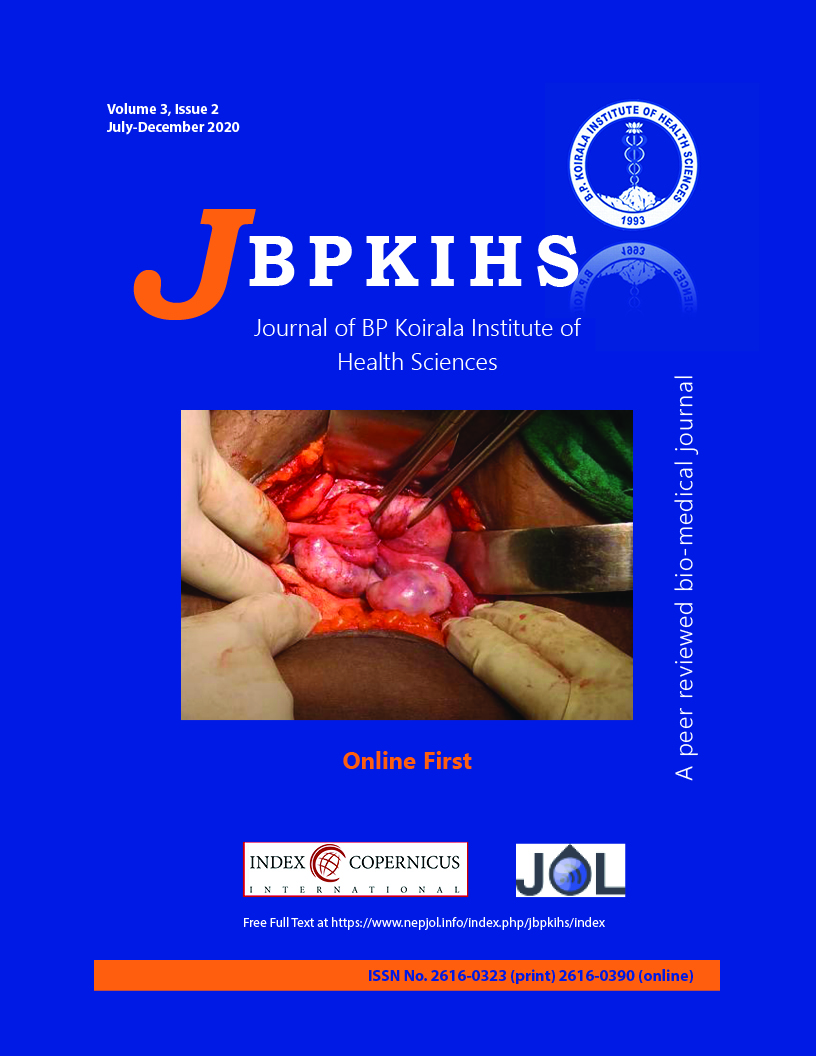Screening of Hearing in Infants at Risk in a Tertiary Care Centre: A Descriptive Cross- sectional Study
DOI:
https://doi.org/10.3126/jbpkihs.v3i2.34512Keywords:
auditory brainstem reflex, hearing loss, otoacoustic emission, screeningAbstract
Background: Screening of hearing impairment in children facilitates earlier identification, management and prevention of disability. The objective of this study was to perform a screening of hearing in infants at risk in Tribhuvan University Teaching Hospital.
Methods: A descriptive cross-sectional study was done among 228 infants who were at risk of hearing loss. All ‘at risk’ infants born to mothers in Tribhuvan University Teaching Hospital and ‘at risk’ children below one year of age admitted in the pediatric ward and intensive care unit were screened for hearing loss by automated otoacoustic emission (OAE) and automated auditory brainstem reflex (ABR). The results were categorized as pass or refer (fail). The association between hearing loss and the potential risk factors was analyzed.
Results: Out of 228 infants screened, 117 (51%) were male and 111 (49%) were female. Seventy (30.7%) failed OAE and 44 (19.3%) failed ABR. Univariate analysis (Pearson Chi-square test) showed that the failure rate for ABR was significantly associated with preterm babies (p = 0.009), low birth weight (p = 0.009), usage of ototoxic drugs (p = 0.03), and intensive care unit stay of more than five days (p = 0.03). Only preterm birth was significantly associated with failed OAE test (p = 0.03).
Conclusion: Premature birth (gestational age < 34 weeks) was associated with failure of the ABR and OAE tests. The infants with low birth weight, history of ototoxic drugs, ICU stay more than 5 days were only associated with ABR test failure.
Downloads
Downloads
Published
How to Cite
Issue
Section
License
This license enables reusers to copy and distribute the material in any medium or format in unadapted form only, for noncommercial purposes only, and only so long as attribution is given to the creator.




